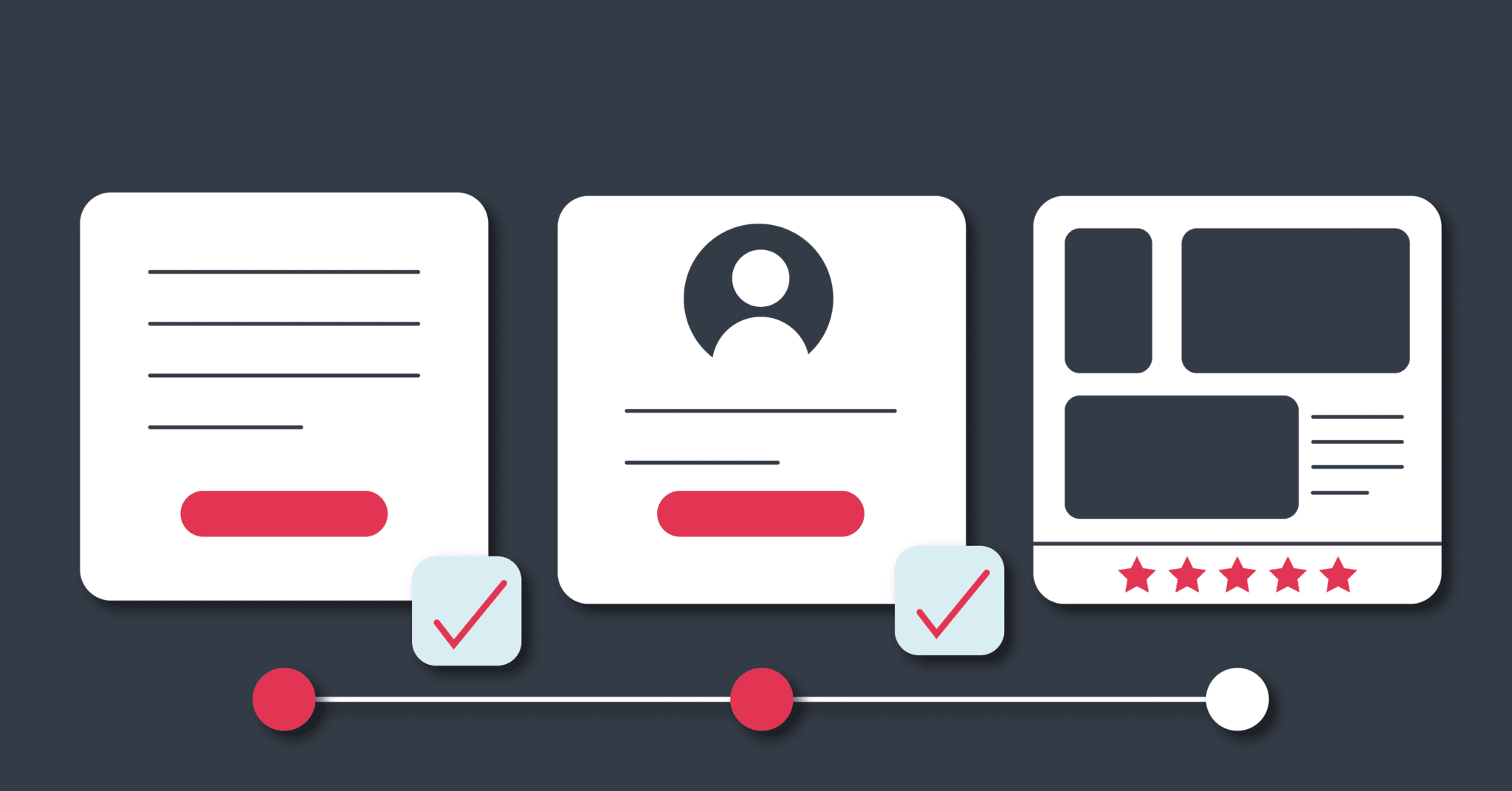
As we’ve discussed previously, customer onboarding is a critical part of the overall customer experience. You want to educate your users about how to use your software and you need to keep them engaged, converting them into power users. A poor user SaaS onboarding experience means your users are less likely to stick around, and therefore are more likely to head to a competitor.
Onboarding is about getting your customer from the moment when your users get the value of your product/feature, to the point when your users actually feel the value of your product, and finally to the point where users are completely converted to using your product and realise that they can’t be without it.
Self-service vs. white glove
While you might want to control your customer’s onboarding experience, some new users may want to use only some of your SaaS’s features or use them differently from how you intended. This is where self-service onboarding can be extremely useful, because it allows new users to control their initial experiences with your product, and use it on their own terms. It works well for simple products and B2C solutions.
In comparison, white-glove onboarding means that you, as the SaaS provider, will bring new users on yourself, often in a one-to-one process. It works well for highly customisable products. To be really effective, white-glove onboarding requires coherent coordination between customer success teams, as well as personalised training and resources for after-hours assistance. Team location, size and number of accounts will all affect the development of an efficient onboarding process which still allows teams to be dedicated to each customer. But it’s not always scaleable and it is more costly.
In summary, self-service will see your customer get themselves up and running, but you can’t be sure if they’re using your product in the right way, plus they will miss the human element of the onboarding process. With white-glove, you will be managing things on behalf of your customer. While it offers better service, it will require more resources in the form of calls and face-to-face time.
So which should you use and when?
White glove onboarding model
Generally, for more complex enterprise-level applications, a more bespoke hand-holding onboarding process is needed. And of course, no customer is alike, which tends to drive the hand-holding.
One of the first rules of white glove onboarding is to meet one-to-one with your customer in order to gain a deep understanding of their business, their goals, and the challenges and obstacles they face. It will mean asking a lot of questions, multiple calls, and understanding that you have a personal stake in their business success.
Self-service onboarding model
As we’ve discussed, self-service is good from a company point of view as it’s less resource-intensive. Despite this, you should aim to provide a good self-service model.
What makes a good self-service model?
- Video tutorials, webinars, forums and on-demand resources will all help your customer to get to grips with your product quickly, efficiently and effectively
- Manual onboarding – provide a customer support member to talk to with a dedicated account management model
Remember that any resources you provide will need to be kept updated and maintained and this could be more onerous for smaller teams.
Hybrid onboarding model
The great thing about onboarding is that it doesn’t need to be one or the other. And if your customers are of different sizes and types, then not everyone will need one-to-one onboarding. There are pros and cons to self-service and white glove and, in some cases, a hybrid approach may be the most suitable because a combination of the two approaches can work extremely effectively. The best of both worlds is when onboarding allows customers to learn while using the tool, and it works well for slightly more complex products that require a gentle nudge in the right direction.
The sign-up process can be different with both approaches. For example, our customers won’t get a Cyclr account until they have spoken to someone in Cyclr, whereas anyone can sign up and get started with Mailchimp.
Good tools for onboarding
Self-service tools:
- Tooltips in the application – in a self-documenting application, you can provide prompts and explainers throughout
- Intercom to do onboarding flows
- Online forum and/or e-learning platform
- Detailed, instructional documentation – really good documentation will make all the difference to a customer’s self-service onboarding experience
- API documentation – use a tool like Swagger to generate, visualise and maintain API docs.
- Video-based tutorials
White glove tools:
- An easily contactable and responsive helpdesk
- A self-booking service or calendars for onboarding sessions.
Choosing the right onboarding solution for you and your customers should take into account your product, your company size and of course, your customer. As you grow, it may be that you transform your onboarding process too: you may have more resources to white glove your customers or to provide a comprehensive and fully supportive self-service option. Or you might find that a mix of both provides your customer with the best of both worlds and gives you the flexibility to support your customers in the most effective way possible.